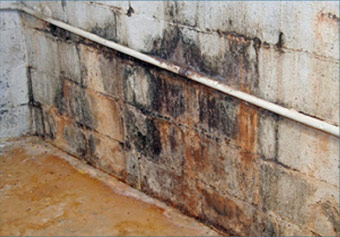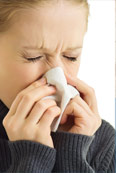We Are a Certified Water Damage & Mold Removal Company
Mold can be a serious health risk to you and your family. As a locally owned and operated mold removal company in Birmingham with over 17 years of experience, we provide the highest quality and most cost effective services from start to finish. We stand behind our name with guaranteed results and services. Our goal is to ensure your home is properly restored and safe for your family.
Click on the links below to find out more
about why we do what we do:

> What Is Mold?
Mold is an organism that may be found indoors or outdoors. They are part of the natural environment and they play an important role in breaking down and digesting organic material, such as dead leaves or trees.
What are Fungi?
Common everyday examples of fungi are yeasts and mushrooms. Under the right conditions they can be quite useful, while others may be very dangerous.
What is the Problem with Mold?
Mold is not usually a problem indoors unless the conditions are right and they begin to multiply or amplify. Mold spores can be a serious irritant and the mycotoxins some spores produce have been known to be very dangerous.
> Health Effects of Mold
Molds produce allergens (substances that can cause allergic reactions), irritants and, in some cases, potentially toxic substances or chemicals (mycotoxins). Inhaling or touching mold spores may cause allergic reactions in some individuals. Mold does not have to be alive to cause an allergic reaction. According to the EPA, breathing in mold may also cause hypersensitivity pneumonitis, an uncommon disease that resembles bacterial pneumonia. It can also result in opportunistic infections in persons whose immune systems are weakened or suppressed.
Who Should Be Concerned?
Most regulatory entities like the EPA, CDC, FEMA etc.. who have reason to oversee events involving mold, along with the medical community in general, agree that those who are Immune Compromised, are Elderly or are Infants, should be careful not to be exposed to abnormal levels of mold. While these groups have been shown to be particularly susceptible to the adverse health effects of mold exposure, the average person should also use caution when they believe they are exposed to abnormal fungal ecology.
Watch for Symptoms
Allergic reactions to mold are common and can be immediate or delayed. Repeated or single exposure to mold, mold spores, or mold fragments may cause non-sensitive individuals to become sensitive to mold. Repeated exposure has the potential to increase sensitivity. Allergic responses may include hay fever-like symptoms such as headache, sneezing, runny nose, red eyes and skin rash (dermatitis). Molds can cause asthma attacks in people with asthma who are allergic to mold. In addition, mold can irritate the eyes, skin, nose, throat and lungs of individuals whether or not they are allergic to mold.
> Why Mold Removal/ Remediation?
Live or viable mold spores continue to multiply if the conditions are right. They produce Microbial Volatile Organic Compounds (MVOC’s) that have a decaying musty smell and can pose obvious health threats. They are typically small or even sub-micron particles that can travel great distances on air currents and pose the risk of contaminating other areas including but not limited to adjacent rooms and HVAC systems.
Unfortunately dead mold spores can carry the same mycotoxins that live mold spores carry and can also pose a health threat. The objective of mold remediation should be to return the affected area to normal fungal ecology through proper remediation.
Mold Inspection and Testing
Mold remediation requires an initial inspection to determine the source of the moisture, the extent of the damage and to develop a plan that ensures the safety of occupants and workers. It should also include the protection of non-affected areas and the safe removal of spores to return the area to normal fungal ecology.
Ensuring the Safety of Occupants and Workers
The safety of occupants and workers during remediation is extremely important. Our personnel are thoroughly trained in health and safety practices through both OSHA and industry specific organizations like the Institute of Inspection Cleaning and Restoration (IICRC). Some of our personnel have reached the level of “Master” designation in their training and experience. This assures that you will have dedicated professionals protecting your health and interests during the remediation process.
Create a Controllable Environment at the Mold Source
Mold contamination should be controlled at its source all the way through to removal and disposal. Our personnel are trained to implement engineering controls designed specifically for your project. These controls contain mold spores and contaminated materials protecting you and your property from cross contamination.
Remove Mold
Since dead mold spores can carry dangerous mycotoxins, physical mold removal is a key component in mold remediation. Once removed remediation may include HEPA Vacuuming, cleaning surfaces, anti-microbial treatments and sealing.
Eliminate the Water Source
A critical step in the remediation process is to eliminate or control the source of moisture intrusion. If moisture is allowed to remain in contact with surfaces, even treated materials can be overwhelmed by fungal growth.

Additional Mold Removal Resources

IICRC Certified in Applied
Microbial Remediation
Certified Mold Inspector
Certified in Mold
Remediation
Specification Writing



